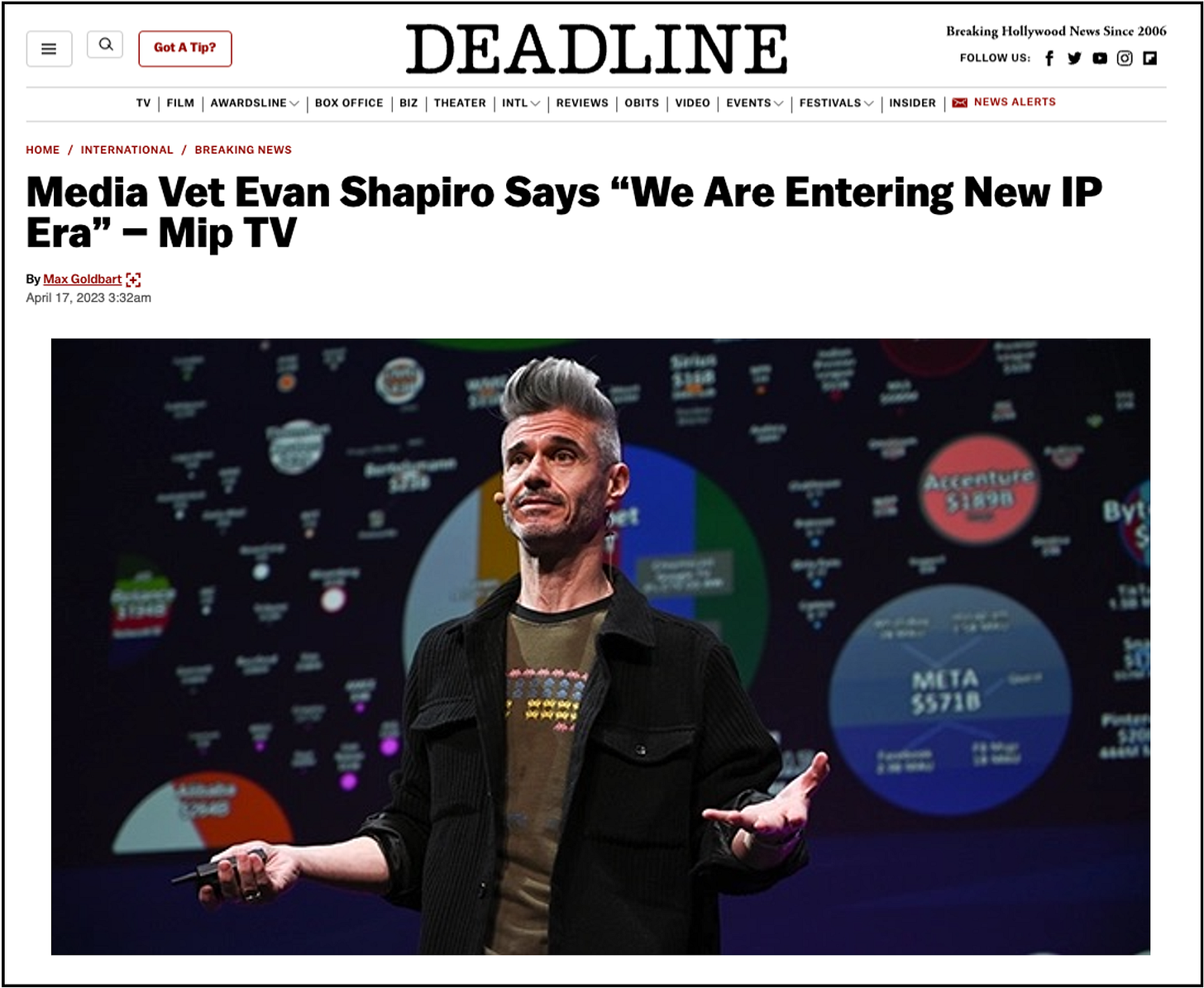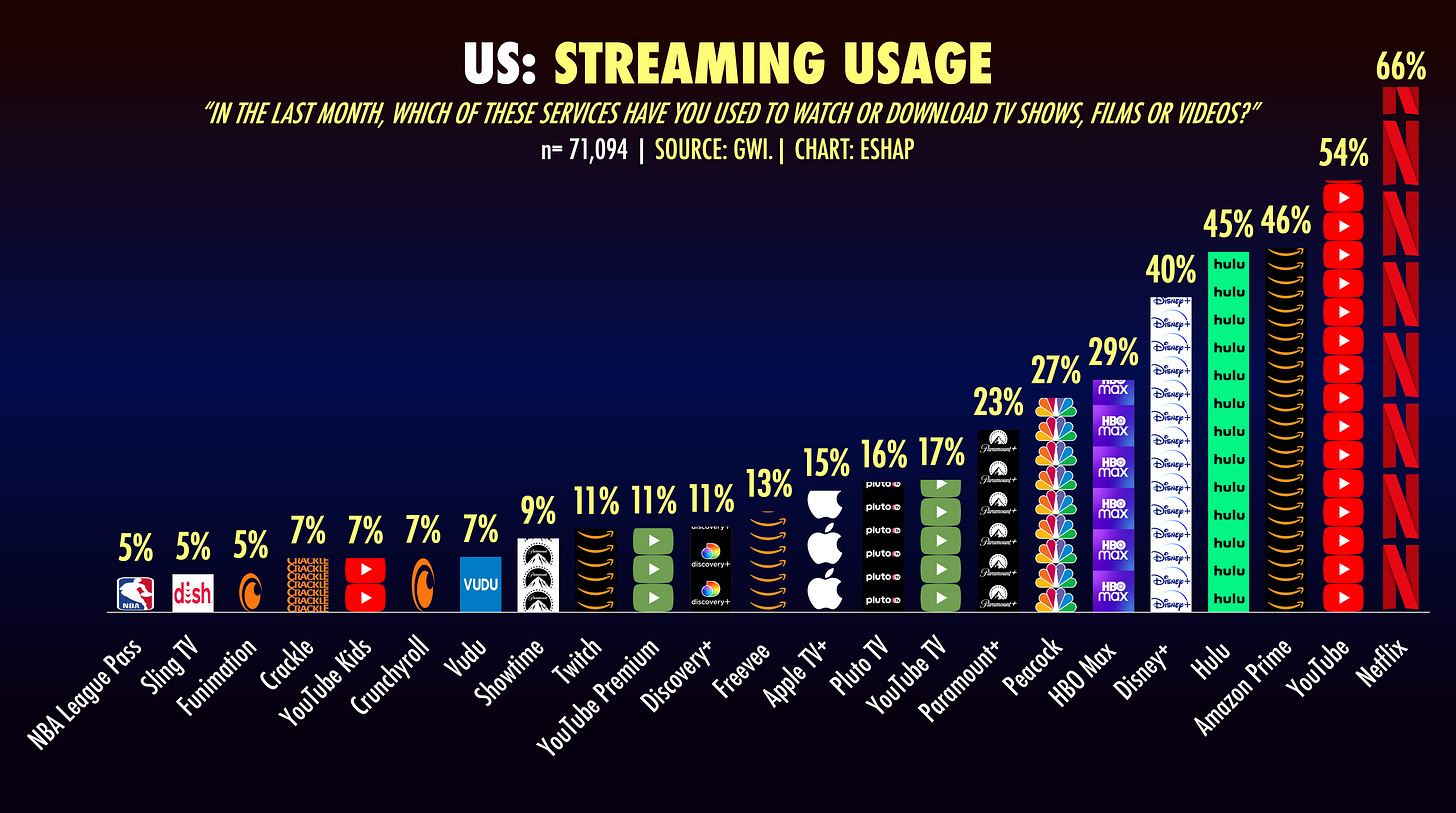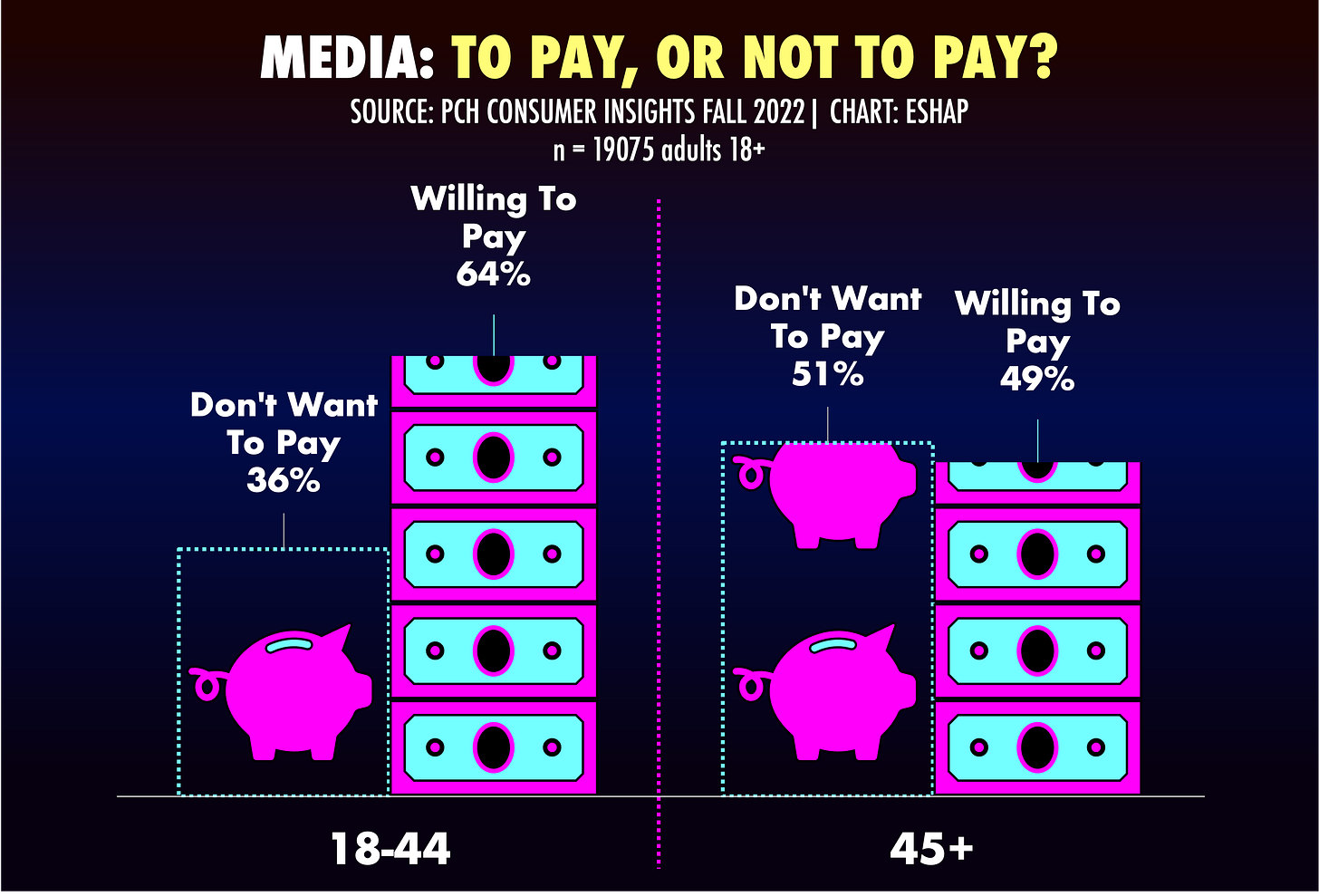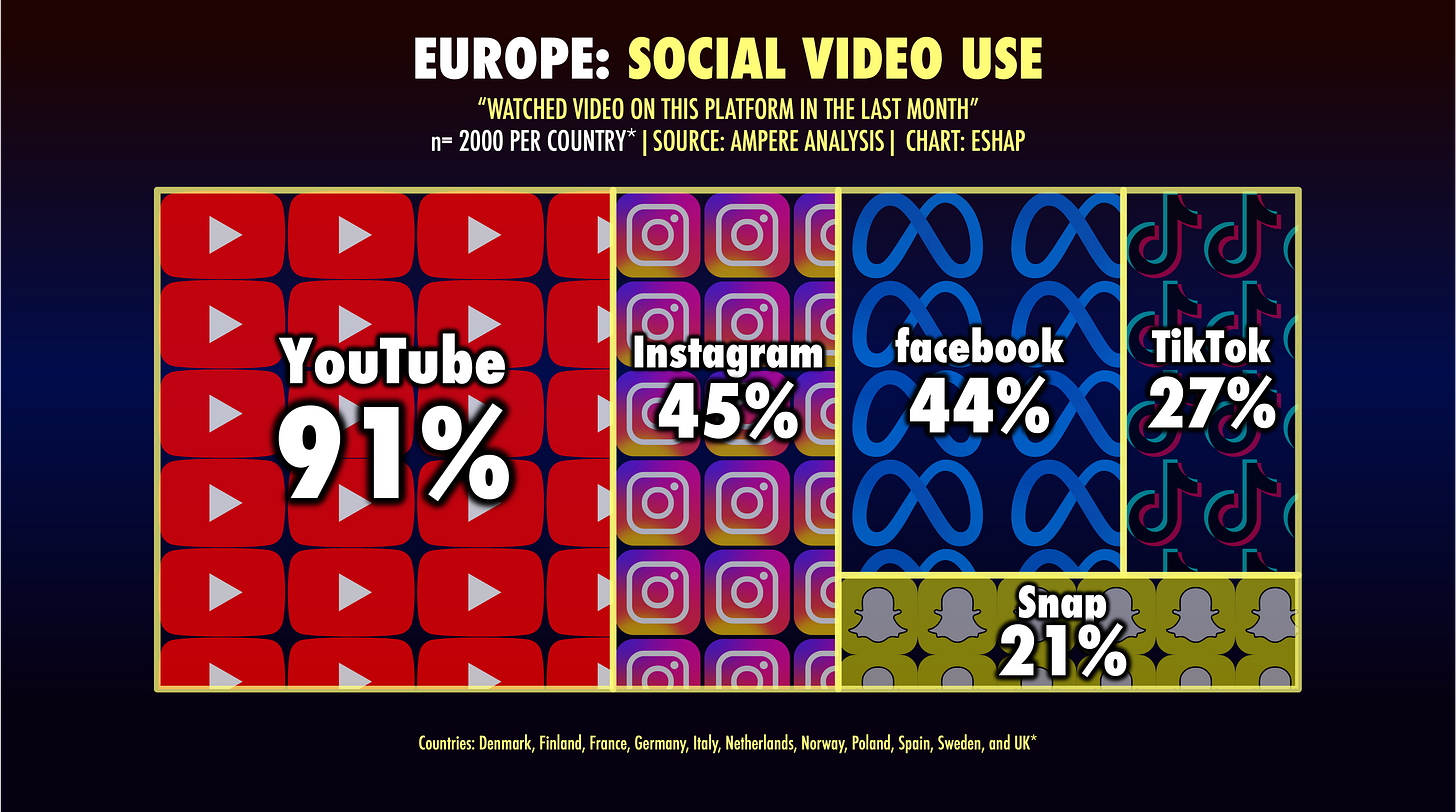Happy Weekend War & Peaceniks. Let’s make Frenemies!
I spent the last week at MIPTV making presentations about what’s on the other side of our current Media Apocalypse, sharing a slew of new research and imploring my friends in the television industrial complex to stop trying to “tweak” their models, and entirely rethink the ecosystem from top to bottom.
“We need to reshape the way we think about how television is consumed and distributed and, ultimately, the economy underneath it. We have to change our mindset completely. We can’t just shift and tweak.
Evolving is crucial in the next three years. Those who don’t will fail. I’m here to beg for a complete rethink on how we approach the distribution of and the economics of our television industry.
You can’t redesign the bathroom in a house that’s burning down. That only leaves you with a really nice toilet and a whole bunch of smoking crap. You need to rethink how you reach your consumer and how the value chain between you and your consumers will work.”
(Quite a few folks from the conference and the interwebs have asked for the slides I showed and the data I shared. The entire presentation with all my silly charts and graphs are at a link at the bottom of this post.)
Increasingly, audiences (especially those under 45) are bundling their Media for themselves, across the spectrum of all these layers, in an array of services of their own making, based on their personal Maslow’s Hierarchy of Feeds.
Consumers curate these bundled feeds according to their own tastes. More importantly for the future of our collective businesses, they are now actively shifting the economics at the hearts of their Media, based on the content they most desire at the moment in time they consume it.
As someone who actively maps and tracks these behaviors, every day, this all points to three major consumer-focused drivers that will fuel the engine of the global entertainment flywheel for the next 36 months. In my humble but studied opinion, the players in the Media ecosystem must either lean into these drivers, or get run over by them.
Here’s an outline of those three drivers, their potential impacts, and a link to my entire presentation for you to download and digest.
3 DRIVERS FOR 3 YEARS:
1. YES, AND
The central theme of my presentations was leaving behind the idea of “either, or” and embracing the complicated nuances of “Yes, And.”
Unlike the staid C-Suite Suits who drove us into this Media ditch, consumers no longer see Media as binary: “Paid OR Free,” “Linear OR On Demand,” “Premium Video OR Social.”
Want proof? Here’s a gallery of streaming service preferences from the US, Europe, the UK, Germany and France, based on stellar data from GWI.
And, below, are the main priorities that Generation Z audiences say they consider when deciding to which streaming services they’ll subscribe, and data from Publishers Clearing House on how consumers want their content served to them.
And, here are the top three streaming platforms for Generation A (kids 8-15) from 16 countries around the globe.
Note the ease with which consumers traverse from free to paid, and back again. For most consumers (and nearly all audiences under 35) social video and premium video are part of the same continuum of content considerations. As are linear and on demand. As are free and paid.
Yes, cost is a factor. And for the content they most want, it’s also not. Yes, ads matter. And, they also sometimes don’t.
2. COLLABOR-GATERS
Look at this (recently updated) map of the CTV Wars.
Nearly all the major platform players on the map are now both distributing third-party content AND directly competing with the publishers they aggregate.
YouTube is the most used video platform on the face of the earth. It is competing with TV and other streaming platforms for eyeballs and dollars - while also serving as the biggest distributor of content FROM those very same TV and streaming players.
Also, Google is the fastest growing CTV OS platform, a gateway to more and more CTV users everyday. Google TV just launched a massive FAST platform, chock full of their publisher competition’s IP. YouTube TV is the fastest growing Pay TV distributor in the US - increasingly the MVPD of choice for upscale TV consumers who DO want a TV bundle, but one with tech invented in this century. Not to mention that Google controls 94% of search, 67% of browser use, and YouTube is the #3 music platform on earth.
Publishers fear Google. But if they believe they can avoid aggressively working with them, they’re even more naive than I imagine.
Amazon owns a top 3 SVOD provider, the largest live streaming platform on the planet, and FreeVee, a very fast growing FAST platform. They compete directly with all the mainstream publishers. And they are an enormously vital SVOD aggregator via Amazon Channels; and a top 3 CTV maker (aka gatekeeper) across the globe.
Publishers have no choice but to both compete and work with the big box of smiles.
Samsung is the largest maker of CTVs on earth, giving publishers access to hundreds of millions of viewers around the world. And they are now a powerful global FAST platform, eager to take ad dollar share away from the video platforms they aggregate.
Apple is now competing directly with the publishers who sell stuff in their App Store, and they control access to the pockets of the most valuable consumers in all media (reaching just 30% of smartphones, yet garnering 60% of all app sales on earth).
Comcast is the largest Pay TV operator and broadband provider on earth. Publishers like Disney and Disco Bros rely heavily on them for the part of their Media empires that are still profitable - linear Pay TV. Streamers and CTV platforms such as Amazon, Roku and even Samsung reach many of their most valuable consumers via Comcast’s pipes. Meanwhile, Comcast-NBCU-Peacock-Kabletown are also a powerful competing publisher, in the US and Europe (via Sky).
Yes, publishers cannot survive if they don’t play nice with these Collaborgators. And, these gatekeepers will not survive without the content publishers they serve-aggregate-compete-with, any more than a raging fire can survive without oxygen.
Thus, certain publishers and creators (and brands) can - if they so choose - wield a newfound leverage over their massive gatekeeper Collaborgators. Can platforms survive in the UK without the BBC or Channel 4; thrive in Germany without ZDF or ARD; compete in France without France Télévisions or TF1? Unlikely, if not impossible.
The complications and nuances of these relationships - and how both sides navigate them - are fundamental to the new economics of the global Media industry.
3. THE COMMUNITY ECONOMY
We’ve all been calling this the Creator Economy, but that’s become a misnomer. The wide, wild west economy emerging online on platforms like YouTube, Roblox, podcasting and social media platforms, is not limited to YouTubers like Mr. Beast, or cult leaders like Joe Rogan.
The ecosystem that birthed a generation of TikTokers, influencers and podcasters, is now as vibrant and important for publishers and brands who want to run businesses built on strong, long-term relationships with their most important constituents. But the currency of this new media economy is not reach, its passion; not CPMs, but rather the lifetime value of an engaged Community.
From this moment forward, half of the real potential value of any IP will come from the Community Economy. This translates not just to content, but also to brands. Publishers who only rely on the traditional content economy will leave half their upside on the table. Producers who only sell B2B will only find their slog getting sloggier. And brands who only buy reach from the Gatekeeper Economy, will find themselves usurped by competitors who create communities that they control themselves.
The Community Economy has one main tenet: Cults are good businesses.
That’s why Rogan got $200 mil from Spotify. That’s how Reese Witherspoon got $1 billion for Hello Sunshine. That’s why Mr. Beast is worth $1.5 bil.
To be clear, this is not a call to choose between B2B and D2C - it’s a rallying cry to Yes, And.
Commanding the direct relationships with your audiences does not just create value, it builds leverage. The more love you form around your IP, the stronger your position in the marketplace, regardless of what business you are in. Yes, this is true for artists. And, it’s just as true for publishers and brands. Build a strong cult around your IP, and the gatekeepers will come calling, and begging, to play along.
Since the dawn of modern Media, we’ve made “professional Media” the ultimate walled garden. Either you’re inside, or you’re an outsider. That time is over.
Over the last decade, we’ve spent billions building walls around our gardens - separating paid from free; audio from video; mainstream entertainment from gaming; “professional” Media from “social” Media. That era has come to its ignominious end.
We’ve slowly given consumers more and more power every year. Now they have it all. Our audiences do not want either/or, they want Yes, And. Moving forward, Media players will give it to them, or they will fail trying not to.
The link to the presentation I shared at MIPTV is below. Feel free to download, share and hit me up with questions or comments. If you don’t see the link and instead see a paywall, please note that yes, you got everything above for free, and consider becoming a paid sub as your part of the Community Economy 😜.
Enjoy the weekend!
ESHAP
Keep reading with a 7-day free trial
Subscribe to Media War & Peace to keep reading this post and get 7 days of free access to the full post archives.























